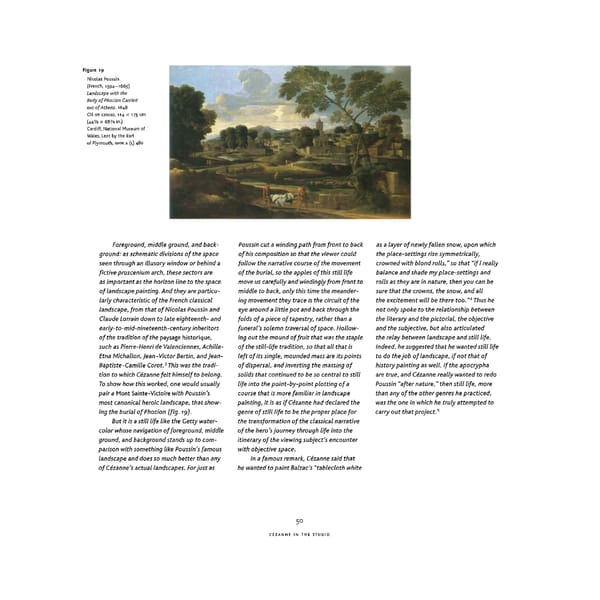Figure 19 Nicolas Poussin (French, 1594-1665) Landscape with the Body ofPhodon Carried out of Athens, 1648 Oil on canvas, 114 x 175 cm 7 7 (44 /s x 68 /s in.) Cardiff, National Museum of Wales. Lent by the Earl of Plymouth, NMW A (L) 480 Foreground, middle ground, and back- Poussin cut a winding path from front to back as a layer of newly fallen snow, upon which ground: as schematic divisions of the space of his composition so that the viewer could the place-settings rise symmetrically, seen through an illusory window or behind a follow the narrative course of the movement crowned with blond rolls, " so that "if I really fictive proscenium arch, these sectors are of the burial, so the apples of this still life balance and shade my place-settings and as important as the horizon line to the space move us carefully and windingly from front to rolls as they are in nature, then you can be of landscape painting. And they are particu- middle to back, only this time the meander- sure that the crowns, the snow, and all larly characteristic of the French classical ing movement they trace is the circuit of the the excitement will be there too."4 Thus he landscape, from that of Nicolas Poussin and eye around a little pot and back through the not only spoke to the relationship between Claude Lorrain down to late eighteenth- and folds of a piece of tapestry, rather than a the literary and the pictorial, the objective early- to -mid-nine teen th -cen tury inheritors funeral's solemn traversal of space. Hollow- and the subjective, but also articulated of the tradition of the paysage historique, ing out the mound of fruit that was the staple the relay between landscape and still life. such as Pierre-Henri de Valenciennes, Achille- of the still-life tradition, so that all that is Indeed, he suggested that he wanted still life Etna Michallon, Jean-Victor Bertin, andJean - left of its single, mounded mass are its points to do the job of landscape, if not that of Baptiste-Camille Corot3 This was the tradi- of dispersal, and inverting the massing of history painting as well. If the apocrypha tion to which Cézanne felt himself to belong. solids that continued to be so central to still are true, and Cézanne really wanted to redo To show how this worked, one would usually life into the point-by-point plotting of a Poussin "after nature, " then still life, more paira Mont Sainte-Victoire with Poussin's course that is more familiar in landscape than any of the other genres he practiced, most canonical heroic landscape, that show- painting, it is as if Cézanne had declared the was the one in which he truly attempted to ing the burial ofPhodon (fig. 19). genre of still life to be the proper place for carry out that project.5 But it is a still life like the Getty water- the transformation of the classical narrative color whose navigation of foreground, middle of the hero's journey through life into the ground, and background stands up to com- itinerary of the viewing subject's encounter parison with something like Poussin's famous with objective space. landscape and does so much better than any In a famous remark, Cézanne said that of Cezanne's actual landscapes. For just as he wanted to paint Balzac's "tablecloth white 50 CÉZANNE IN THE STUDIO
 Cézanne in the Studio: Still Life in Watercolors Page 64 Page 66
Cézanne in the Studio: Still Life in Watercolors Page 64 Page 66